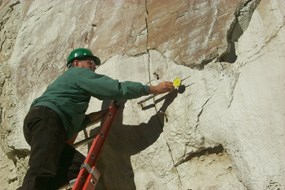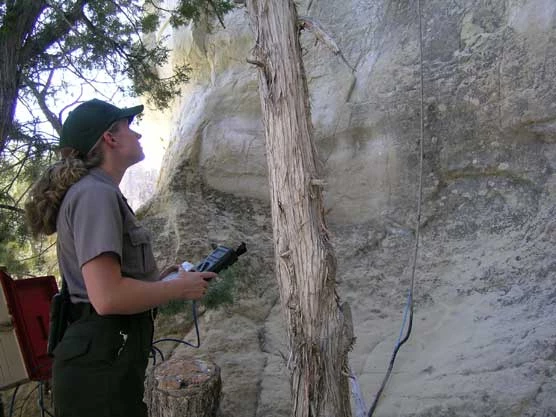
In 2000, four bolts, accessed by ladder, were placed on opposite sides of the large crack to serve as reference points. The one to the left of the crack is used to measure distances to the three on the right side. These measurements are done on a regular basis and allow staff to note changes and trends in the width of the crack. Is it moving? Most of the movement occurs during the winter months, during the freeze and thaw cycles. As water infiltrates the crack and then freezes, it expands, pushing the crack further apart. As it melts, the crack moves closer together again. The patterns of our data indicate that the crack widens and narrows on a very small scale with little, if any, continuous outward movement away from the main rock. This leads us to believe that the monolith is stable. However, with safety always in mind, the National Park Service will continue this monitoring program. 
NPS photo |
Last updated: May 6, 2025
